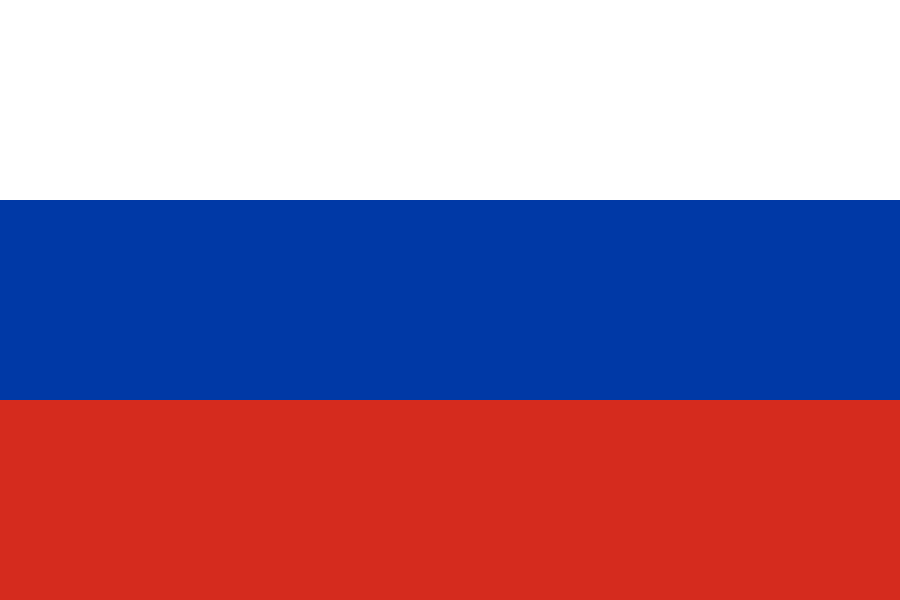Design:
The flag of Russia consists of three horizontal stripes of equal width, artfully arranged from top to bottom: white, blue, and red. This uncomplicated yet captivating configuration has etched itself into global recognition as an emblem of Russia.
Colors and Symbolism:
- White Stripe: Ascending from the flag's zenith, the white stripe carries manifold meanings, encompassing nobility, purity, and innocence. It is a canvas on which the cherished virtues and values of the Russian populace find expression. White, with its symbolism of hope and renewal, is a visual embodiment of the nation's optimism for a brighter, promising future.
- Blue Stripe: Nestled between the realms of sky and sea, the blue stripe traverses the middle of the flag, resonating with multifaceted symbolism. Vigilance, truth, and loyalty converge within its azure expanse. This shade, emblematic of the vast skies and expansive waters that have shaped Russia's geography, alludes to the ceaseless vigilance and unwavering allegiance of the Russian people in protecting their homeland's sanctity.
- Red Stripe: Anchoring the flag's foundation is the crimson red stripe, saturated with historical and emotive significance. It stands as a tribute to courage, valor, and the indomitable spirit of self-sacrifice. Across the annals of Russian history, the red stripe becomes a reverberation of the sacrifices rendered by generations during moments of conflict and adversity, an enduring testament to the nation's resilience and unyielding determination.
Historical Evolution:
The genesis of the tricolor flag traces back to the late 17th century under the patronage of Tsar Peter the Great. An ensign for naval endeavors, the white-blue-red tricolor was conceived, with each hue symbolizing distinct facets of the Russian state.
Through the passage of centuries, the flag's narrative metamorphosed in tandem with Russia's political tapestry. The imperial epoch of the Russian Empire witnessed the tricolor's evolution with nuanced variations. Subsequently, the crimson banner of the Soviet Union surged to prominence following the crucible of the Russian Revolution in 1917, reflecting a paradigm shift in ideological underpinnings.
Emerging into the modern era, the dissolution of the Soviet Union in 1991 saw Russia's reclamation of the traditional white-blue-red tricolor, heralding a reconnection with historical heritage and the revival of pre-Soviet Russian symbolism.
Usage and Symbolic Significance:
The Russian flag unfurls its colors on a diverse spectrum of occasions and locales—gracing government edifices, adorning military installations, enlivening sports events, and accentuating public celebrations. It is a visual emblem, resonating with the essence of national identity, unity, and the storied heritage of the Russian people. The flag's elegant design and evocative hues kindle a profound sentiment of patriotism, conjuring emotions that bridge Russia's storied past with its boundless future.
In official contexts, the flag is frequently accompanied by the national emblem—an eagle with twin heads bearing an array of symbolic icons. This emblem serves to fortify the identity and authority of the Russian state, amplifying the flag's significance.
In summation, the flag of Russia unfurls as a potent embodiment of the nation's values, historical continuum, and aspirational voyage. Its tricolor motif and meticulously chosen colors encapsulate the lofty ideals, steadfast loyalty, and indomitable vigor of the Russian people, rendering it an enduring symbol of the nation's identity.
Last Updated on: August 08, 2023